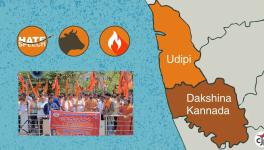Tipu Sultan: Hero or Villain? Resurgence of the Debate
We recently witnessed one of the worst cases of horse-trading, which led to the fall of Congress-Janata Dal (Secular) government and paved way for the Bharatiya Janata Party (BJP) government in Karnataka. BJP, after coming to power, in one of its first moves, has not only decided to stop the state celebration of Tipu Sultan, the medieval king, but it has also decided to hold anti-Tipu Rallies on the “Black day” on November 10, the birth anniversary of Tipu. It seems that the way medieval history has been written, people can be portrayed in diverse ways. The same person can be presented as a hero for some communities and a villain for others. In case of Tipu, the picture is much more complex. Earlier, Tipu was looked up to as a hero even by Hindu nationalists, as presented in the series Bharat Bharti by Rashtriya Swayamsevak Sangh (RSS) in 1970s. Some BJP leaders even donned the Tipu attire and held a sword at a rally in 2010.
Our president, Ramnath Kovind – who has been associated with the RSS – just a couple of years ago, had gone on to praise Tipus’s bravery and his contribution to the development of Missiles at his time. At the same time, as communalism strengthens its roots in Karnataka, he is being presented as an anti-Hindu tyrant. Recently, while Congress projected Tipu as a hero to woo the Muslims, BJP engaged in a parallel game of demonising him for wooing the Hindus. This game continues. As we delve deeper into the narratives around this king and take a look at various aspects in an objective manner, it becomes clear as to how communal interpretation of history has been used to ‘divide and rule’ by the British. Also, the selective presentation of the events shows how the present communal forces have employed certain events to glorify or demonise the kings of this period, mainly based on their religion. However, these kings were primarily guided by their motives of maintaining or expanding their empires for which they indulged in various activities – like destruction of temples or patronising the Hindus.
If we look at Tipu’s history, one of the most intriguing parts is his attitude towards expansion of the East India Company. With the decline of the Mughal Empire, the path for expansion of the Company was becoming smoother. Tipu realised this and appealed to the Marathas, Raghunath Rao Patwadhan and Nizam not to collaborate with the British. He did foresee the dangers of a foreign power deepening their roots in this land. As such the Marathas and Tipu, Tipu and Nizam had a rivalry in matters of controlling the areas they were ruling. One such step in this direction was the attack by Marathas on Tipu’s area. Patwardhan’s armies attacked Mysore in 1791 and plundered the Shringeri monastery. Interestingly, it was Tipu who restored glory of the monastery by sending valuable gifts apart from other things. As a ruler, he was the chief trustee of the same monastery and used to address the swamy of this monastery as Jagadguru (world teacher). Tipu was also seeking his blessings for most of his military expeditions.
At the same time, he was also instrumental in attacking Varaha temple. The reason was simple. The temple had boar as the symbol, which was the icon of Mysore dynasty that he had defeated to come to power. In selective historiography, one example will be used to paint him as anti-Hindu, but one needs to understand that these policies were totally guided by interests of power. Same with Marathas desecrating the Shringeri monastery; the target was not the Hindu religion, but was the rival king Tipu.
There are other accounts about Tipu preferring Persian as his court language and thereby ignoring Kannada. The fact is that at the time, Persian was the court language of most of the kings of the subcontinent. We recall Maharashtra’s Shivaji having Maulana Haider Ali as his confidential secretary, as the correspondence with other kings had to be in Persian. It is alleged that Tipu murdered hundreds of Brahmins who refused to be converted to Islam! This is totally false, as one should recall that it was Purnnaiya, a Brahmin, who was his chief advisor. These are deliberate lies spread by the British, who had been more vicious against Tipu, as he was the one who stood rock solid against their expansion in India.
Similarly, Tipu is accused of targeting some Christian and Hindu communities. This is partly true. Some of these communities were targeted as they were helping the British, against the interests of the Mysore state. On parallel ground, he also targeted the Muslim Mahdavis, who were joining the East India Company forces as horsemen in British army. The consideration is again the arithmetic of power and not religion in any sense.
Communal forces have been using history as a powerful tool for their divisive politics. An interesting fact was brought forward by one of the researchers from Maharashtra, Sarfarz Shaikh. In his book, Sultan-E-Khudad, he reproduces manifesto of Tipu Sultan. In this manifesto, Tipu pledges that he will not discriminate his subjects on the grounds of religion, and he will protect his kingdom till his last breath. And that is precisely what he did—rather than compromising with the British, he laid down his life fighting them as he was killed in the Fourth Anglo Mysore war in 1799.
Late Girish Karnad, the doyen of the theatre world, pointed out that had Tipu been a Hindu, he would have got the same honour and prestige, which Shivaji enjoys in Maharashtra. The folk songs on Tipu still reverberate in the villages of Mysore, praising him for his bravery.
We do need to overcome the ionisation of heroes on the basis of religion. On one level, I do feel most of our icons need to be drawn from our freedom movement, from those who contributed to ‘India as a nation in the making’. We do need to overcome the fascination of icons created by communal historiography.
Get the latest reports & analysis with people's perspective on Protests, movements & deep analytical videos, discussions of the current affairs in your Telegram app. Subscribe to NewsClick's Telegram channel & get Real-Time updates on stories, as they get published on our website.
























